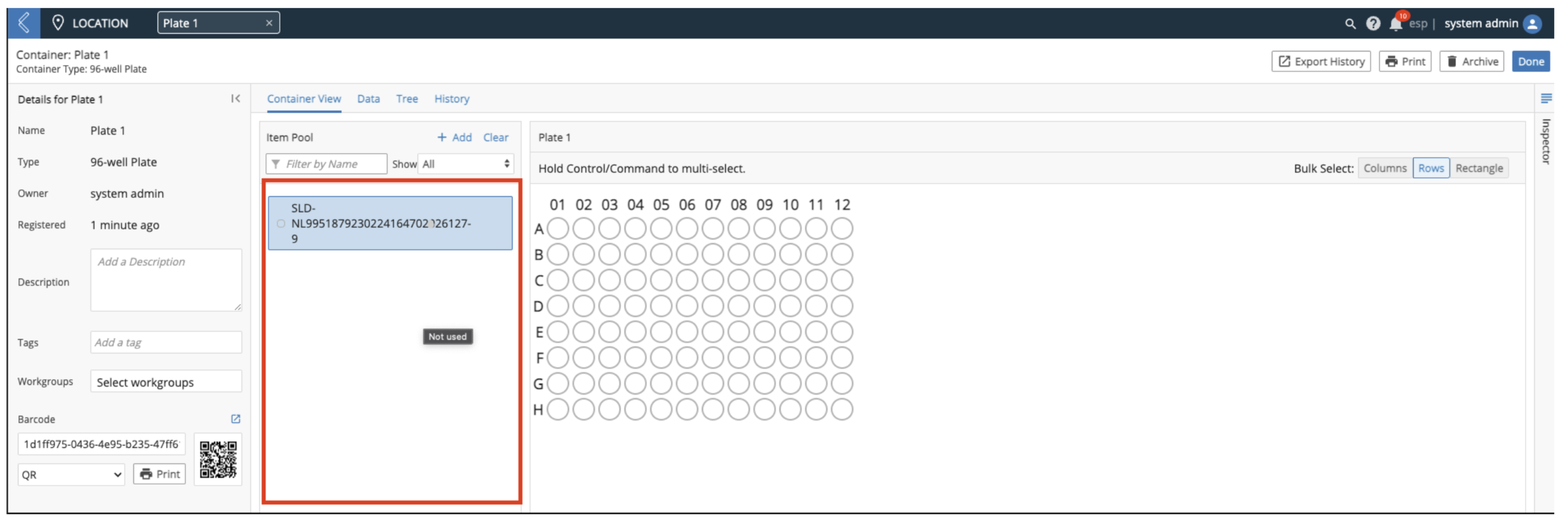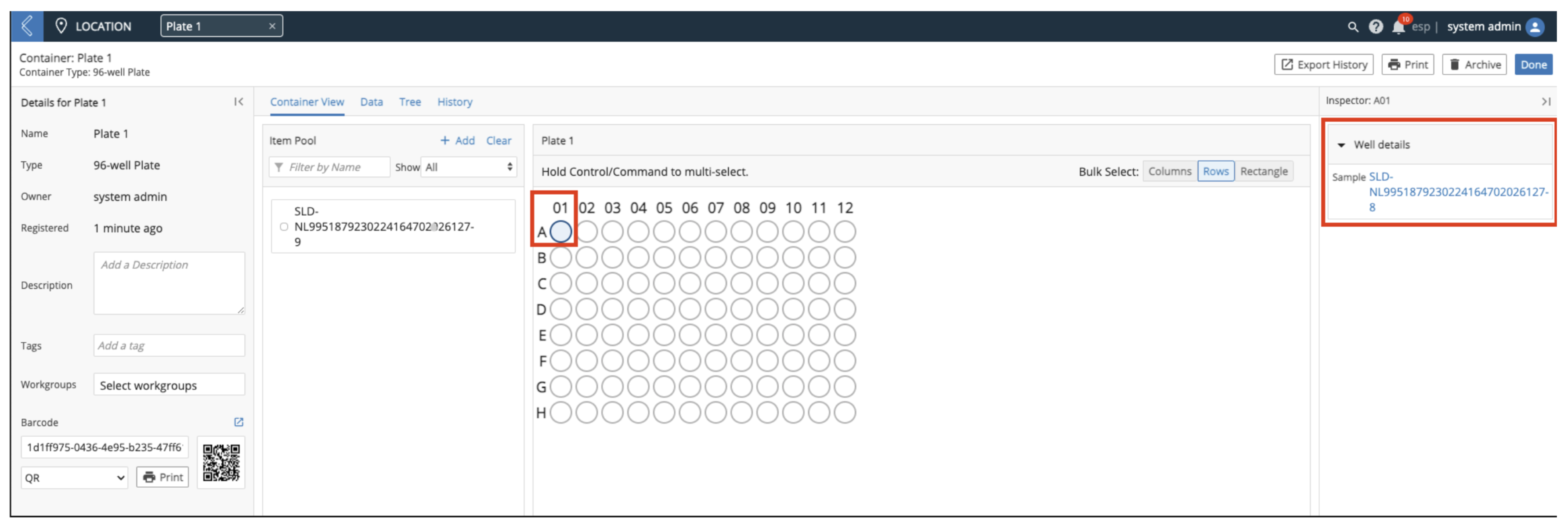Reference: Workflowable Containers
L7|ESP 3.0 adds the ability to send Container entities and Items entities into workflows in addition to the standard Sample entities class. In 3.0, containers filled with samples can be added to a workflow; however, users may not be able to create New Containers via the Experiment Wizard in ESP 3.0.
If scanning is already part of the defined process to load containers, L7 recommends users scan and fill the container via the out-of-the-box Scanning Listener using one of two recommended methods:
1. Users can scan samples by first clicking on the “Item Pool” on the left hand side and this will allow them to manually arrange samples in the container if needed (see screenshot below).

2. If samples will be filled column-wise or row-wise first, users should click the starting cell and starting scanning should allow users to load containers with the minimal number of actions (see screenshot below).

As for moving between Containers and Samples in SampleSheets, this ESP 3.0 Feature is called "Workflowable Containers" (or "Workflowable Resources").
The idea is that out-of-the-box entity classes such as Containers and inventory items such as consumable lots, kits, etc., may be moved through workflows in addition to the standard Sample entity class. Moving Containers through workflows allows users to minimize the recording of redundant data across the many entities within the container.
If all samples within the container would have the same process data recorded (for example, all explants were treated with agrobacterium and with the same growth medium), this would reduce the number of redundant inserts to the database by a factor of (M rows x N columns) sample rows to one (1) container row.
For very high throughput processes on the scale of 1000s of samples, users may see benefits with adopting this model, and pushing the Sample-level recording and processing to ESP Pipelines as this would allow users to simultaneously work elsewhere in the application instead of waiting for a heavy SampleSheet save calculation.
Lastly, this has been shown to help with frontend performance by avoiding the rendering of 1000s of rows (machine scale data-entry).
This approach may also be useful to improve the user experience and enhance convenience, as users can now work with submitting Plates of samples instead of trying to track down multiple sets of 96 or 384.
There are a few noted limitations with Workflowable Containers users should be aware of:
Users cannot switch between the Container and the samples, within the Container, within the same Workflow (e.g., can't switch from container rows to samples inside the container rows within the same SampleSheet)
Users cannot use a Sampling Protocol to create "child" containers within the Workflow, as Sampling Protocol currently only supports Sample-like Entities, not Containers or Items
NOTE: To switch between data entry about Containers and data entry about Samples, users could use a custom transition strategy to take in the container uuid(s) and lookup the sample uuid(s) inside the container and return that in the transition strategy function as this will create a new Experiment in the downstream workflow with the samples inside the container